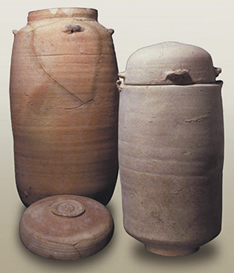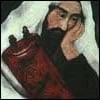
"The telegram will be sent tonight. We need to word it very carefully, as each letter is prohibitively expensive."
Woops, wrong century.
"I'm going to the post office today to mail the letter. It should reach your mailbox within a week or two."
Off again… wrong decade.
"Check your inbox in two minutes. I'm emailing the document now."
Get with the times… email is just so passé.
"Follow me on Twitter and remember to add me as your Facebook friend!"
Instant Messenger is done with.
"Google Wave is the new wave that will replace email."(At least according to Google, that is.)
Times change. Very quickly.
So is anything unchanging?
The ROM (Royal Ontario Museum) here in Toronto recently featured an exhibit on the Dead Sea Scrolls. They marketed this event as "Words that Changed the World."
As part of a joint program of several synagogues in the Greater Toronto Area, my husband delivered an informative, historical lecture on these Scrolls. Deciding to make a family trip out of the event, we headed downtown with our children to spend the day at the museum.
Although my five-year-old daughter decided that climbing a support column in the room was far more thrilling than these "boring exhibits" (so much for taking five-year-olds to museums), the rest of us enjoyed the well-organized displays. We began with the photos and visual replicas of various parts of Israel, including Khirbet Qumran, which is the archaeological site closest to the cave where the Dead Sea Scrolls were discovered.
We eagerly made our way forward towards the climax – the actual fragments of the Dead Sea Scrolls.

We spent several moments peering down the glass display cases of each one. Under the dimmed lighting, we studied the ancient, yellowed, and sometimes torn fragments.
A book in English, even from just a few centuries ago, is practically incomprehensible to anyone who is not versed in Old English. And yet, in contrast, these ancient scrolls are readable to any child who has attended a Jewish day school. Many of these scrolls contain the G‑dly words of wisdom that we still study and pray nowadays, many centuries later, and, incredibly, are just as significant and relevant today.
The last fragment contained phrases from the book of Psalms. These are words that we sing around our Shabbat table every week, before the blessings after the meal. My eleven-year-old son bent over the display case and effortlessly deciphered these pearls of hope and aspiration.
With great wonder and care, my son decoded the ancient Hebrew words of King David, recited by millions over the centuries – in death camps and prisons, at weddings and births, in times of joy and despair.
"…When G‑d will return the exiles of Zion, we will have been like dreamers. Then our mouths will be filled with laughter and our tongue with songs of joy. Then will they say among the nations, 'G‑d has done great things for us; we were joyful. G‑d, return our exiles as streams to arid soul. Those who sow in tears will reap with songs of joy…'"
If cameras were allowed inside the ROM, this would have qualified as a Polaroid moment.
A young boy, living here in Toronto, Canada, in the 21st century, standing one Sunday afternoon in the modern Royal Ontario Museum building in our downtown core…
Ancient fragments, somewhat yellowed and torn, written over 2,200 years ago, discovered in caves near the ruins of Qumran by the shores of the Dead Sea…
And yet the two merge in a seamless and effortless link, forging an unbreakable bond that defies the passage of time.





